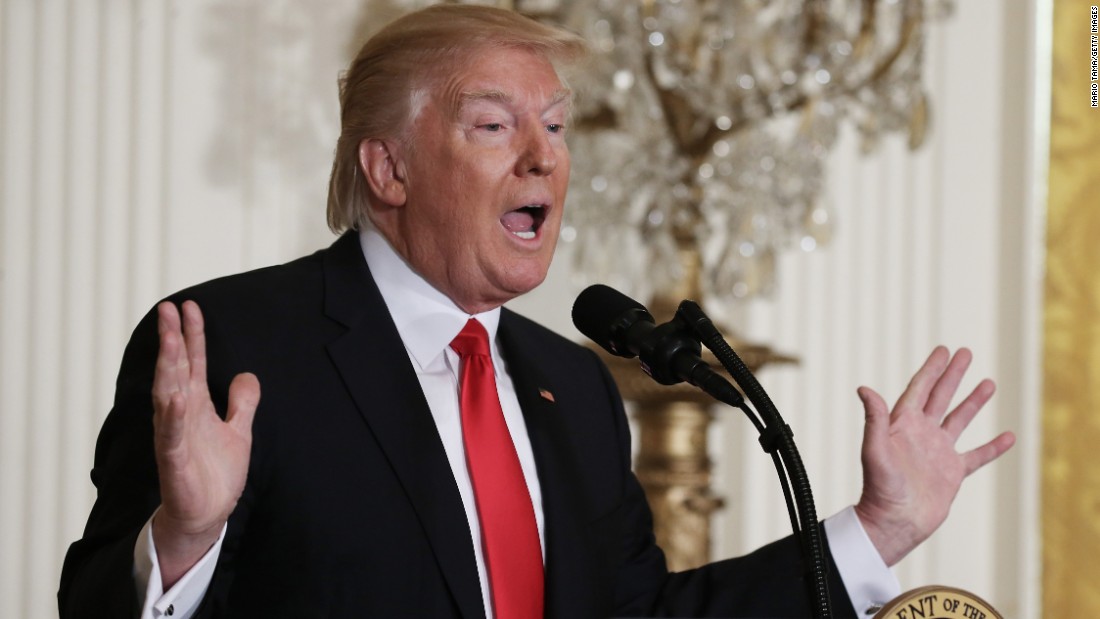Notable Trump Press Conference Moments

Donald Trump’s press conferences were often marked by controversy and dramatic moments, shaping the political landscape and generating headlines. These events often served as platforms for his pronouncements on various issues, his attacks on critics, and his defense of his policies.
The “Fake News” Press Conference (January 11, 2017)
This press conference, held just days after Trump’s inauguration, was notable for his repeated attacks on the media, labeling them “the enemy of the American people” and accusing them of spreading “fake news.” Trump’s rhetoric ignited a debate about the role of the press in a democracy and the relationship between the president and the media. This press conference marked the beginning of a tense relationship between Trump and the press, which would continue throughout his presidency.
The “Very Fine People on Both Sides” Press Conference (August 12, 2017)
This press conference was held in response to the deadly white supremacist rally in Charlottesville, Virginia. During the press conference, Trump said there were “very fine people on both sides” of the rally, drawing widespread criticism for his apparent equating of white supremacists with those who opposed them. This statement further fueled the debate about race relations and the role of the president in condemning hate groups.
The “Perfect Phone Call” Press Conference (September 25, 2019), Trump press conference
This press conference was held in response to the revelation of a phone call between Trump and Ukrainian President Volodymyr Zelensky. In the call, Trump pressured Zelensky to investigate his political rival, Joe Biden. This press conference saw Trump repeatedly claiming the call was “perfect” and denying any wrongdoing, despite the growing controversy surrounding the call and its potential implications for his presidency.
The “I Am Not Going to Be Bullied” Press Conference (October 29, 2019)
This press conference was held in response to the impeachment inquiry into Trump’s dealings with Ukraine. During the press conference, Trump accused Democrats of conducting a “witch hunt” and declared, “I am not going to be bullied.” Trump’s defiant stance and attacks on his critics underscored the deep political divisions in the country and the intensity of the impeachment proceedings.
The “I Am Not Leaving” Press Conference (January 6, 2021)
This press conference was held shortly after the attack on the US Capitol by Trump supporters. Trump repeated false claims about the election being stolen and refused to concede defeat. His words further fueled the violence and contributed to the delay in the peaceful transfer of power.
The Media’s Role in Covering Trump Press Conferences

The relationship between the media and Donald Trump during his presidency was undeniably fraught. Trump’s unconventional approach to politics and his frequent attacks on the press created a climate of tension and distrust. This tension was particularly evident in his press conferences, which often became platforms for his own messaging and attacks on the media.
Media Coverage of Trump’s Press Conferences
The media’s coverage of Trump’s press conferences was often characterized by a focus on the president’s controversial statements and his confrontational interactions with journalists. Many news outlets adopted a critical tone, highlighting Trump’s false claims and his attacks on the media. The framing of these events often emphasized the chaos and unpredictability of Trump’s press conferences, portraying them as spectacles rather than serious political events.
Challenges Faced by Journalists in Covering Trump’s Press Conferences
Journalists covering Trump’s press conferences faced several challenges. Trump’s frequent interruptions, his refusal to answer direct questions, and his use of personal attacks created a hostile environment for journalists seeking to conduct fair and objective reporting. The president’s habit of spreading misinformation and making false claims also presented a challenge for journalists, who had to fact-check his statements and present accurate information to the public.
Comparison to Coverage of Other Presidents
The media’s coverage of Trump’s press conferences differed significantly from its coverage of other presidents. Previous presidents, while not always agreeing with the press, generally maintained a more respectful relationship with journalists. Trump’s constant attacks on the media and his attempts to undermine its credibility led to a more adversarial relationship between the White House and the press, resulting in a more critical and often hostile tone in media coverage.
Trump press conference – Trump’s press conferences often focused on his administration’s response to the COVID-19 pandemic, with varying levels of accuracy and transparency. It’s crucial to understand the role of the World Health Organization ( who covid 19 ) in providing global guidance and information during the crisis, as it played a vital role in coordinating international efforts.
These press conferences became a platform for disseminating information, but also for political maneuvering and shaping public perception.
Trump’s press conferences were often marked by their unpredictable nature, with topics ranging from policy announcements to personal attacks. One particularly heated exchange involved his stance on the conflict between Israel and Hamas, where he expressed support for the Israeli government while also acknowledging the complexities of the situation.
To better understand the history of this conflict, it’s helpful to delve into the relationship between the Israeli government and the israel hamas leader , which has been marked by violence and a long-standing struggle for control. Ultimately, Trump’s press conferences provided a platform for him to express his views on a wide range of issues, including the Israeli-Palestinian conflict.
